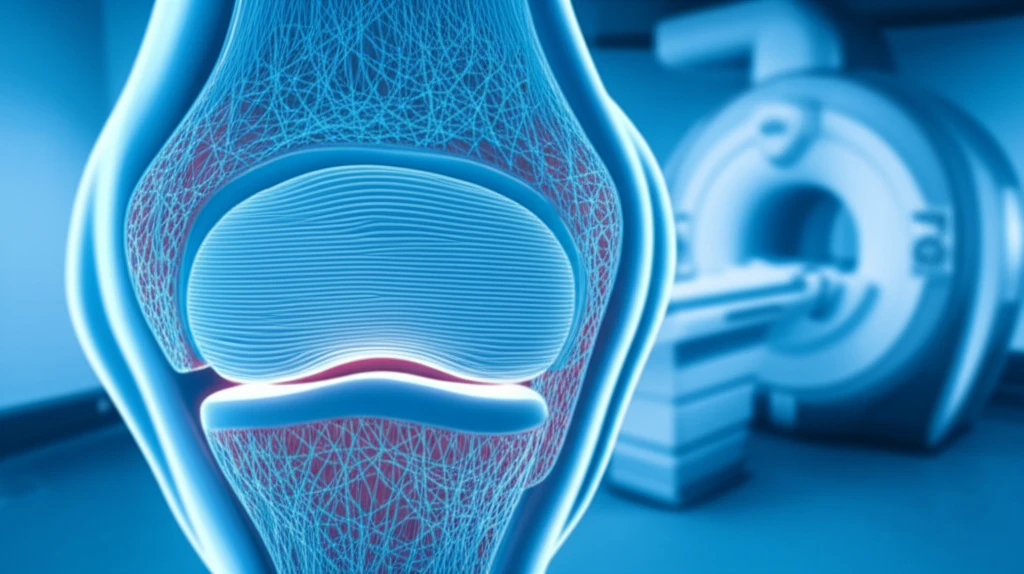
TMJ Troubles? New 3D Scans Reveal the Secrets of Your Jaw
"Advanced imaging offers hope for understanding and treating temporomandibular joint disorders."
That clicking, popping, or aching in your jaw could be more than just a nuisance. Temporomandibular joint disorders (TMD) affect millions, causing pain, limiting movement, and impacting quality of life. While common, the exact causes of TMD can be mysterious, making effective treatment a challenge.
The temporomandibular joint (TMJ), where your jawbone connects to your skull, is a complex structure of bone, cartilage, and a shock-absorbing disc. This disc, made of tough fibrocartilage, is critical for smooth jaw movement, but its intricate internal structure has been difficult to study.
Now, groundbreaking research is shedding light on the TMJ disc's hidden architecture. By combining advanced 3-Tesla magnetic resonance imaging (MRI) with detailed microscopic analysis, scientists have created a high-resolution map of the collagen fiber network within the disc. This new understanding could revolutionize how we diagnose and treat TMJ disorders.
What's the Big Deal About Collagen in My Jaw?

Collagen, the most abundant protein in your body, acts like scaffolding, providing strength and structure to tissues. In the TMJ disc, collagen fibers are arranged in a specific network to withstand forces from chewing, talking, and other movements. This network isn't uniform; it varies across different regions of the disc.
- Central Zone: Collagen fibers are primarily aligned in a sagittal direction (front to back), providing strength along the main plane of movement.
- Anterior and Posterior Zones: Fibers are arranged more randomly (isotropically), allowing for flexibility and shock absorption from various angles.
- MRI Connection: MRI T2 values, which reflect water movement within the tissue, correlate with the degree of collagen fiber alignment. Higher T2 values were found in areas with more random fiber arrangements.
What Does This Mean for My Jaw?
This research opens the door to more precise and personalized treatments for TMJ disorders. By using MRI to assess the collagen fiber network in your TMJ disc, doctors may be able to:
<ul> <li><b>Identify the specific structural problems</b> contributing to your pain and dysfunction.</li> <li><b>Develop targeted therapies</b> to address these problems, such as physical therapy to improve fiber alignment or regenerative medicine to repair damaged tissue.</li> <li><b>Monitor the effectiveness of treatments</b> over time using non-invasive MRI scans.</li> </ul>
While more research is needed, this study represents a significant step forward in our understanding of the TMJ. It highlights the importance of collagen fiber arrangement in joint health and suggests that MRI can be a powerful tool for diagnosing and treating TMJ disorders. If you're struggling with jaw pain, talk to your doctor about whether advanced imaging techniques could help you find relief.
